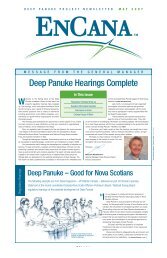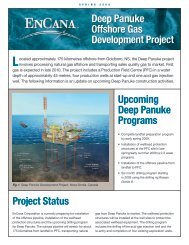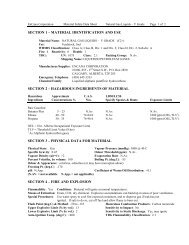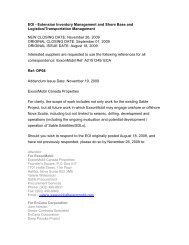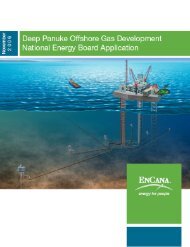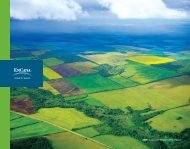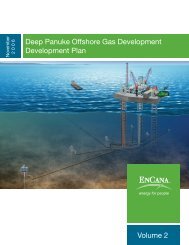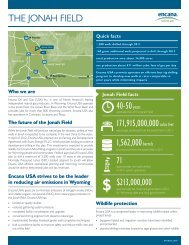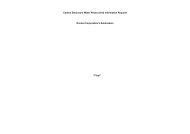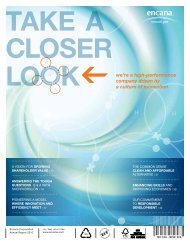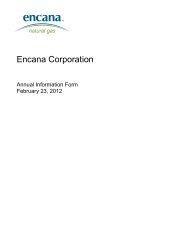Deep Panuke Project Description - Encana
Deep Panuke Project Description - Encana
Deep Panuke Project Description - Encana
You also want an ePaper? Increase the reach of your titles
YUMPU automatically turns print PDFs into web optimized ePapers that Google loves.
A study, consisting of two components, will be undertaken to confirm predictions there will be minimaleffects of the selected chemicals discharged into the environment. A toxicity bioassay program (firststudy component), will be undertaken prior to discharging these compounds. The bioassay will employsamples of the proposed chemical diluted in seawater to emulate the mixtures of chemicals andconcentrations proposed for the hydrostatic test program. The results will be applied in a plumedispersion model (second study component) to confirm that there will be minimal effect to the marineenvironment around the platform. Prior to undertaking this study, the parameters and scope of thebioassay study will be discussed with Environment Canada and DFO.The onshore section of the pipeline will also require hydrostatic testing, which may be conductedconcurrently with the offshore section of the pipeline as discussed above, using the same seawatersource and treatment chemicals.Should the schedule of the onshore section of the pipeline installation be changed, then a separatehydrostatic test may be required. Under this circumstance, the hydrostatic test water could be left in theonshore pipeline until the offshore testing is completed and the hydrostatic test water discharged withthe offshore hydrostatic test water.2.4 Operations2.4.1 ProductionProduction facilities on the MOPU will be operated to optimize production while maintainingenvironmental protection and high safety standards and minimizing environmental impact. Theproduction facilities will be staffed on a 24-hour basis. Facility maintenance and inspectionrequirements will be managed through a maintenance management system that will incorporateproactive and predictive methods as well as intelligent condition monitoring techniques.Production facilities will consist of equipment for separation, metering, amine sweetening, acid gasinjection, dehydration, hydrocarbon dewpoint control (M&NP Option only), produced water treatmentand disposal, condensate treatment, condensate injection (M&NP Option only), feed gas and export gascompression, and utilities. A simplified process flow diagram is presented as Figure 2.10.For the M&NP Option, all production and treatment facilities are located offshore. For the SOEPSubsea Option, production and treatment facilities are primarily located offshore but the export gas andliquids will be routed to the existing SOEP facilities near Goldboro and, subsequently, Point Tupper forfurther processing.<strong>Deep</strong> <strong>Panuke</strong> Volume 4 (Environmental Assessment Report)• November 2006 2-31




